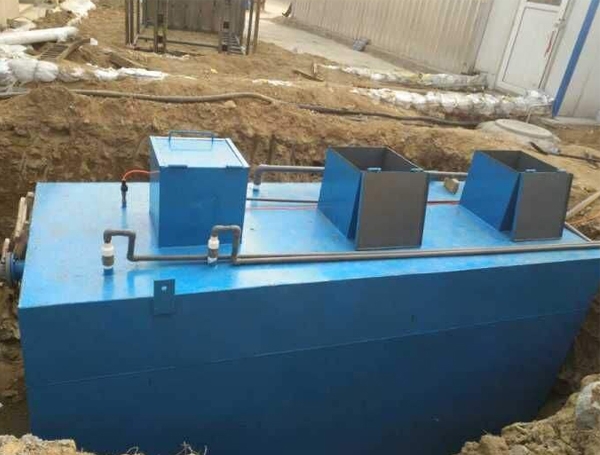
HOME


Analysis of Underground Integrated Sewage Treatment Equipment
Description of treatment process facilities:Underground integrated sewage treatment equipment is a choice for many enterprises.
Wastewater treatment
1.Grid well
In the design of this sewage treatment process,interception equipment is used because the sewage contains a large amount of suspended floating substances,which are prone to accumulate and eventually block process equipment and structures.
2.Regulating pool
A sewage regulating tank is installed throughout the entire treatment system.By adjusting the setting of the regulating pool,the water quality and quantity can be fully balanced,so that the sewage can enter the subsequent treatment unit more evenly,and the impact resistance of the entire system can reduce the design scale of the treatment unit.
3.Hypoxia pool(pool A)
Due to the high organic content in sewage and the good biodegradability of BOD5/CODcr=0.5,the design adopts biofilm method.
4.Contact oxidation tank(O tank)
After being treated in the anoxic tank,the sewage flows into the contact oxidation tank and enters the contact oxidation stage,that is,enters aerobic treatment.
The contact oxidation tank is a biological treatment device mainly based on biofilm method with active sludge.By providing an oxygen source,organic matter in sewage is adsorbed and degraded by microorganisms,thus purifying the water quality.
By using composite fillers,not only does it have a larger specific surface area,but it also has superior water flow characteristics.
Due to a large number of microorganisms being fixed on the surface of the packing layer,a high concentration sludge bed,commonly known as biofilm,is formed,which has strong resistance to load shock.
This structure does not generate sludge expansion due to the absence or minimal production of suspended activated sludge,which is also a major feature of this method.
The key to this stage lies in the biological cultivation and bed settling of the packing layer.As long as this work is done well in the early stage of operation,there is basically no need to ask other questions during operation.
Due to the replacement of the suspension effect in the activated sludge process by the packing skeleton,there is no need for sludge reflux,which greatly reduces the operational management procedures.
Divide the contact oxidation section into three contact oxidation tanks,and the sewage flows through the contact tanks in sequence,that is,divide the contact oxidation into three stages,fully utilize the process characteristics of contact oxidation,and make the sewage pass through the three-stage contact oxidation tanks.
5.Sedimentation tank
After contact oxidation,the sewage carries a small amount of activated sludge and biofilm generated during the oxidation process,as well as a small amount of solid matter that cannot be biodegraded,and enters the secondary sedimentation tank for solid-liquid separation.
6.Sludge tank
The sludge from the sedimentation tank is regularly discharged into the sludge tank for anaerobic digestion/while using intermittent aerobic mixing method.The clear liquid from the sludge tank carries activated sludge back into the anoxic tank,and the remaining sludge is cleaned regularly according to the amount of sludge.